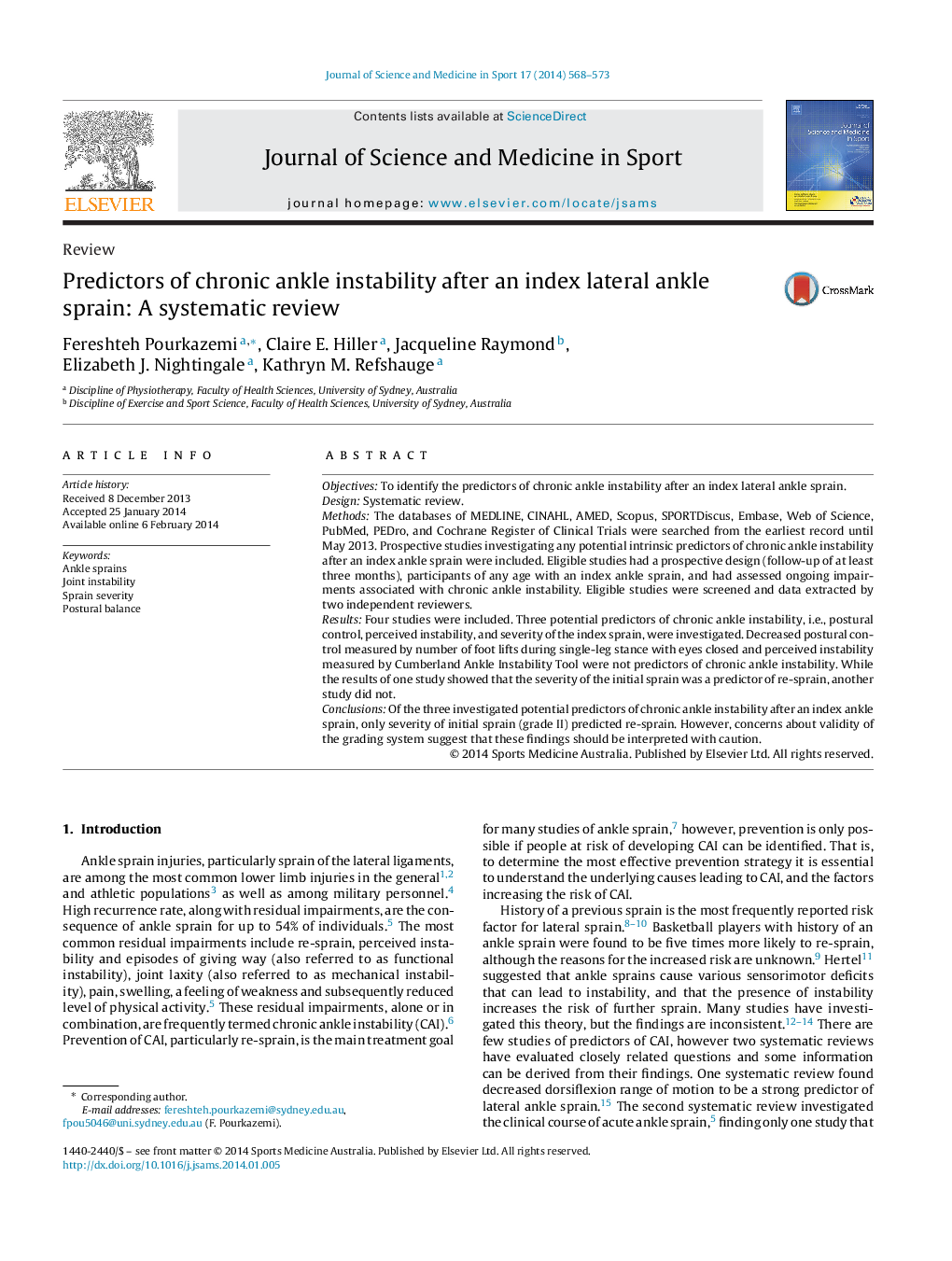| Article ID | Journal | Published Year | Pages | File Type |
|---|---|---|---|---|
| 2701406 | Journal of Science and Medicine in Sport | 2014 | 6 Pages |
ObjectivesTo identify the predictors of chronic ankle instability after an index lateral ankle sprain.DesignSystematic review.MethodsThe databases of MEDLINE, CINAHL, AMED, Scopus, SPORTDiscus, Embase, Web of Science, PubMed, PEDro, and Cochrane Register of Clinical Trials were searched from the earliest record until May 2013. Prospective studies investigating any potential intrinsic predictors of chronic ankle instability after an index ankle sprain were included. Eligible studies had a prospective design (follow-up of at least three months), participants of any age with an index ankle sprain, and had assessed ongoing impairments associated with chronic ankle instability. Eligible studies were screened and data extracted by two independent reviewers.ResultsFour studies were included. Three potential predictors of chronic ankle instability, i.e., postural control, perceived instability, and severity of the index sprain, were investigated. Decreased postural control measured by number of foot lifts during single-leg stance with eyes closed and perceived instability measured by Cumberland Ankle Instability Tool were not predictors of chronic ankle instability. While the results of one study showed that the severity of the initial sprain was a predictor of re-sprain, another study did not.ConclusionsOf the three investigated potential predictors of chronic ankle instability after an index ankle sprain, only severity of initial sprain (grade II) predicted re-sprain. However, concerns about validity of the grading system suggest that these findings should be interpreted with caution.
